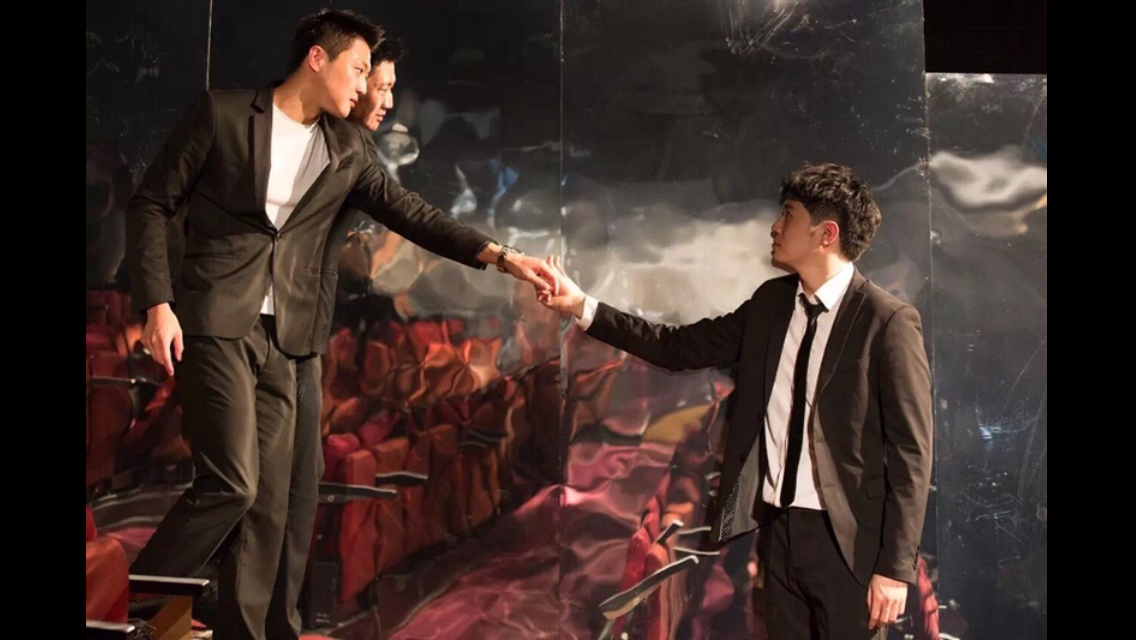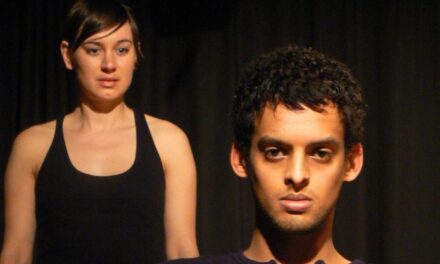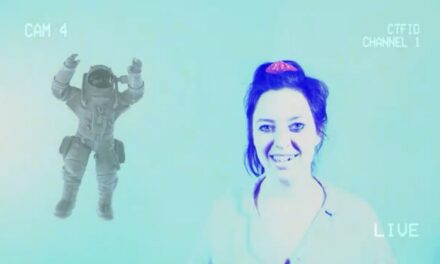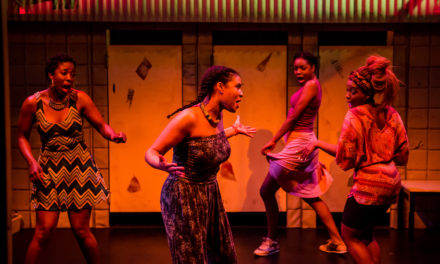April marks the first peak period of the year for the Shanghai theatre scene as it slowly wakes from its Spring Festival slumber. Compared with just a few years ago, the number of performances in Shanghai has been steadily on the rise. On average, forty to fifty shows a month is the new normal, and at least ten to fifteen shows are performed around town each night.
With this change has come another. Fewer and fewer shows in Shanghai now can be judged by their title and synopsis, and it’s become almost impossible to predict whether a show is worth seeing–one has to be there to know. All this has meant more shows to attend and review for theatre critics, and at times I can’t help but feel that I’m being stretched a little thin.
Of all the shows I’ve attended recently, German playwright Marius von Mayenburg’s The Ugly One at Shanghai Dramatic Arts Center (SDAC) merits special mention. At 65 minutes, The Ugly One is shorter than most plays. Having premiered at the Schaubühne Berlin in 2007, it’s being staged in mainland China for the first time by American director Dmitry Troyanovsky, who also mounted Sarah Kane’s 4.48 Psychosis at SDAC in 2015.
For theatergoers with some experience, the combination of “Germany” and “contemporary” might more or less trigger trepidation, since productions attached to those two keywords over the past few years have leant towards the esoteric and extremely formalized. But one can rest assured with The Ugly One, which is nothing if not a play with a well-narrated story.
The plot is crystal clear: a researcher’s unbelievable hideousness makes life and work difficult for him, spurring him to “swap” his old face for a new one at the plastic surgeon’s. The surgery turns out to be an unexpected success beyond his wildest dreams, and all at once he finds himself at the top of the world. Trouble then comes arm-in-arm with the arrival of beauty, however, when countless other people undergo surgery to obtain a face just like his…
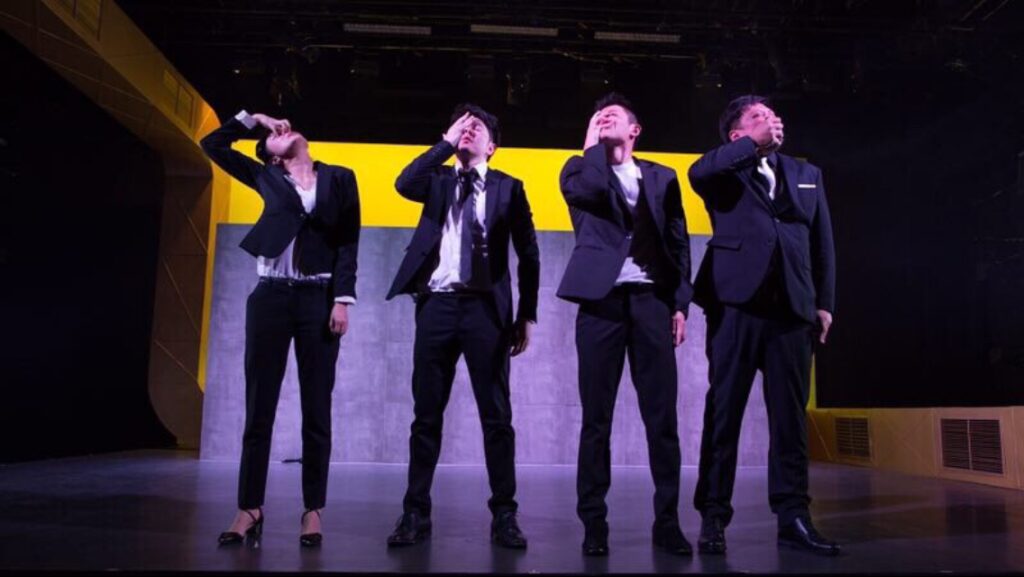
Marius von Mayenburg’s The Ugly One. Directed by Dmitry Troyanovsky. Photo courtesy of Dramatic Arts Center (SDAC)
Had the play only been about the effects of physical appearances on our lives, though, I wouldn’t be discussing it here at such length. While on the surface “the face” seems to be the central topic of The Ugly One, assimilation and self-identity are in fact its real core themes. In the modern era, our social identities are not so much determined by our “face” than by myriad quantifiable qualities. Do you have a stable job? How much is your salary? Do you boast hukou in Beijing, where your claim to the house registration record could open doors that those without can only dream of? Do you follow all the latest variety shows on TV? Do you vacation abroad every year?
Our age is one of consumerism, and anyone is welcome to join the free-for-all to amass desirable labels galore. In fact, the idea of pursuing a social identity that could be described as “standard” and “top-notch” seems far less of a challenge or risk than trading your old face for a new one. Individuals thus morph into rows of indistinguishable résumés displayed in Renmin Park, Shanghai’s famous marriage market, where advertisements boil down to bare “essentials”: “Female, 28 years old, above average looks, owns Inner Ring housing, Fortune 500 employee…”
Although they won’t readily own up to it, most young urbanites today wouldn’t have a problem identifying with Lette the protagonist. Thanks to the astonishing allure of his newly acquired face, post-surgery Lette has everything going for him, gaining fame, wealth, status, and the renewed affections of his wife, not to mention becoming the sexiest man on the planet. In a word, he has become the ultimate success story.
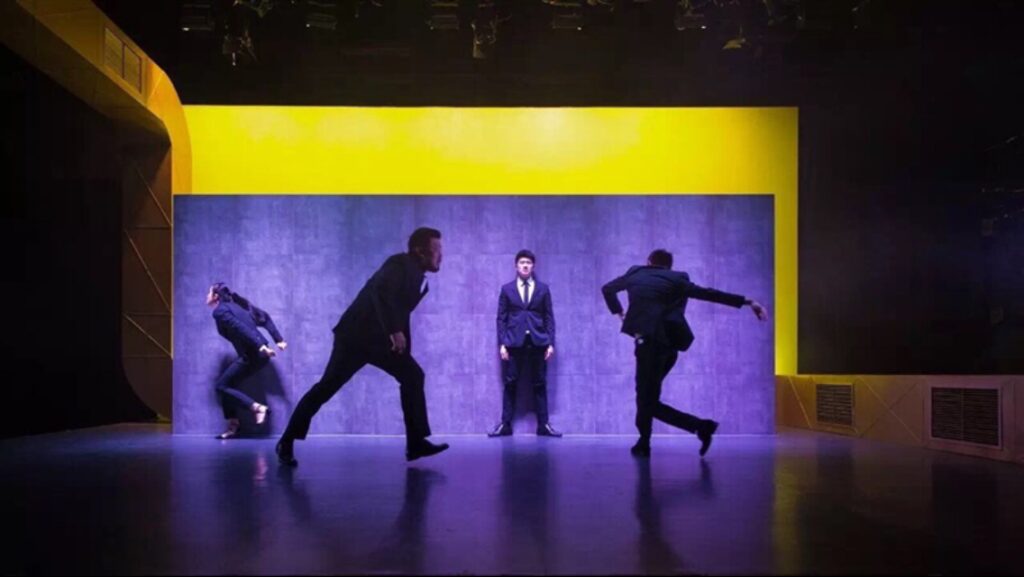
Marius von Mayenburg’s The Ugly One. Directed by Dmitry Troyanovsky. Photo courtesy of Dramatic Arts Center (SDAC)
Yet Lette’s life takes a sharp downhill turn when that face loses its uniqueness. Likewise, living increasingly homogenized lives, we unavoidably encounter the same questions that haunt Lette, questions symptomatic of modernity: “Who am I? How am I different from anyone else? How do I define myself? Where am I going?”
The play accomplishes much within its 65 minutes, bringing the narrative full circle and firing these questions at the audience–without a doubt an excellent script with clear-cut metaphorical implications yet stopping short of preachiness, qualities that seeing Troyanovsky’s production live makes one fully appreciate.
The show is essentially four actors engaging in uninterrupted dialogue within an abstract space. Mayenburg’s script and Troyanovsky’s direction join forces to create a tightly woven exchange between the characters onstage. A particularly noteworthy feature of the production is how a conversation between characters A and B can spontaneously switch to one between A and C in a completely unforced way. Through the choice to stage the production unconstrained by set or costume changes, Troyanovsky ensures that the scene transitions taking place in the middle of conversations feel more fluid and natural than even film cutting could accomplish. Once it gets off the ground, the rapid-fire dialogue never loses momentum, and Troyanovsky’s brisk pacing ensures that as much, if not more information gets across here as in a play of more standard length.
Regular patrons of SDAC are most likely familiar with all four actors. Xu Manman and Zhou Tingchao seem more comfortable delivering their performances here than they were back in the 2015 version of 4.48 Psychosis. Liu Xuanrui and Lan Haimeng are growing into more qualified leading men by the day, both demonstrating an increasingly commanding stage presence.
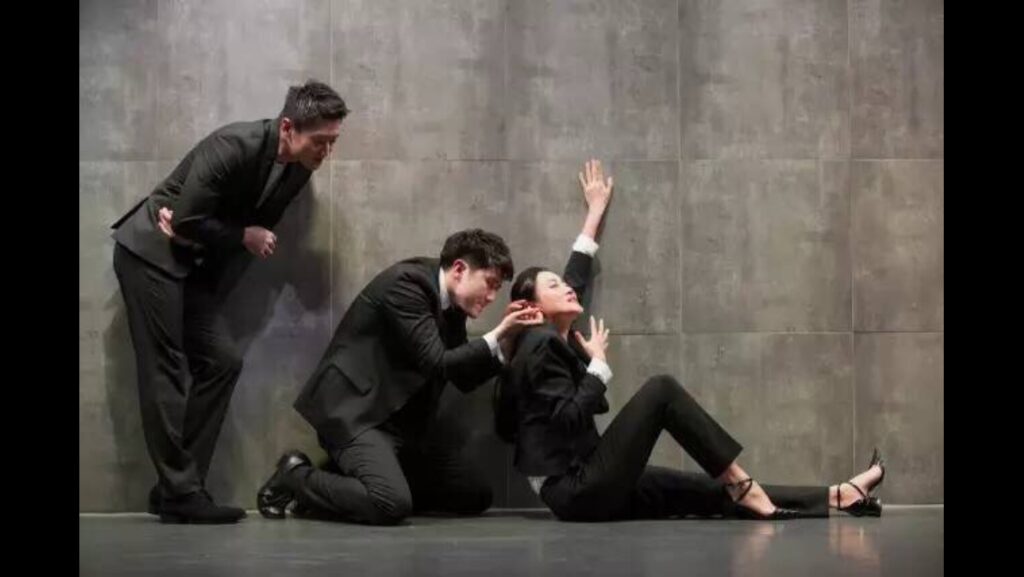
Marius von Mayenburg’s The Ugly One. Directed by Dmitry Troyanovsky. Photo courtesy of Dramatic Arts Center (SDAC)
Formal overload can be a pitfall of contemporary theatre. When directors pile up overly complex formal devices that bear little connection to the text, they become an aesthetic burden for the audience and a detriment to the viewer’s experience. Fortunately, I see none of this in The Ugly One. The physicality employed by the director to express emotions gone haywire is fairly appropriate if standard. Having actors use a microphone to simulate sex sounds from the sidelines as the actual action unfolds onstage is a clever move. What stood out to me above all are the following two points:
The first thing I noticed were the mirrors on either side of the audience. Not only do their presence correspond to the debate about appearances in the play, they also expand the performance space during most of the show. The second is the two-minute live video feed sequence towards the play’s denouement. I hadn’t noticed until then that the wall was, in fact, a gigantic screen. Filming onstage has become something of a vogue on the Chinese stage in recent years. Here, Troyanovsky’s use of live video is restrained and precise, and the sheer visual impact of having every last detail of the protagonist’s face projected onscreen is irreplaceable. When the camera turns towards the screen itself, we see one image multiply into a kaleidoscopic multitude onscreen, which harks back to the symbolic mirroring in the play.
The aesthetic pleasure that The Ugly One has brought me is no surprise: it lives up to the standards I have come to expect of work by producer Lena Sun. In the last few years, her producing credits have included the aforementioned 4.48 Psychosis, Tennessee Williams’ The Glass Menagerie, the new movement piece Refracted Shadow, Marie Jones’ Stones in His Pockets, The Ugly One, and the upcoming The Truth, by Florian Zeller, the latter three of which she also translated herself.
Lena’s goal has always been to create producer-centric productions handpicked with care and taste that audiences can trust, and that is precisely what she has accomplished at SDAC. Never one to jump on the bandwagon, to create hype just for the sake of it, or to thoughtlessly chase after famous names, she has always chosen works she genuinely appreciates, producing plays that won’t necessarily be the biggest marketing hits but never fail to reflect her aesthetic standards and sincerity as a producer.
Troyanovsky’s 4.48 Psychosis is currently enjoying a revival at SDAC, and The Truth will start its run later this month. After that, starting from this summer, SDAC’s regular theatre building at No. 288 Anfu Road will undergo an eighteen-month renovation—make sure to catch a performance or two there while you still can.
(The Ugly One ran from April 7 to 23, 2017, at Shanghai Dramatic Arts Center, China. Review originally published online at “Great Show” (Hao Xi), a theatre-oriented public account on the social media and digital publishing platform WeChat. Translated and edited by Yan Chen. Yan Chen is the dramaturg for The Ugly One and a graduate student in Dramaturgy and Theater Studies at the A.R.T./MXAT Institute for Advanced Theater Training at Harvard University.)
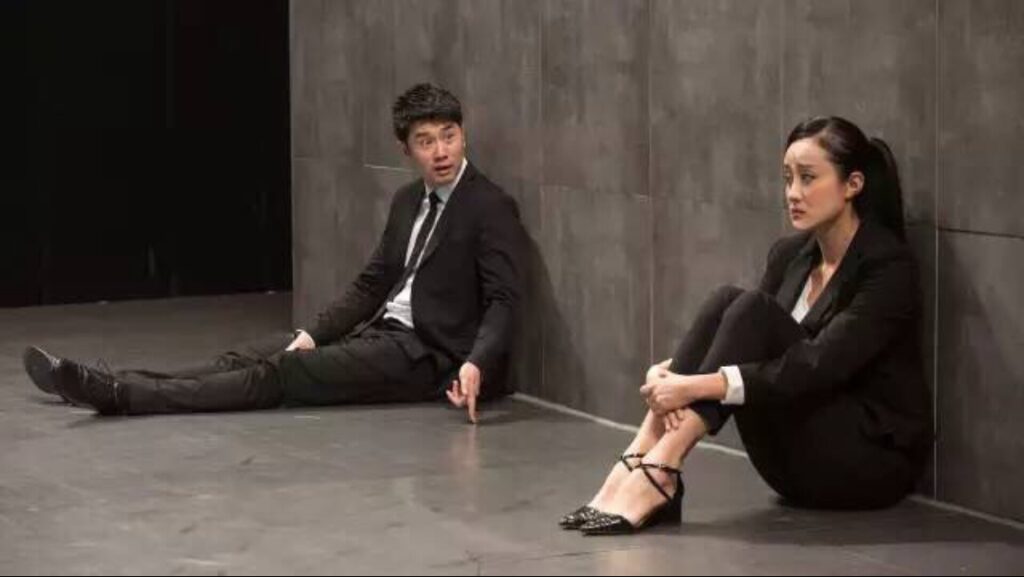
Marius von Mayenburg’s The Ugly One. Directed by Dmitry Troyanovsky. Photo courtesy of Dramatic Arts Center (SDAC)
This post was written by the author in their personal capacity.The opinions expressed in this article are the author’s own and do not reflect the view of The Theatre Times, their staff or collaborators.
This post was written by Jiayi Wei.
The views expressed here belong to the author and do not necessarily reflect our views and opinions.

